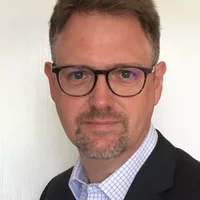SwissFEL building, 24 August 2016: In the control room above the beam tunnel of the free electron X-ray laser SwissFEL, the atmosphere is intense and focussed. Marco Pedrozzi’s team has big plans for this late August afternoon. The last adjustments have been made — it’s time to press the big button and start up the electron source. The goal: SwissFEL should generate its first electrons. A report.
SwissFEL building, control room, 24 August 2016. The atmosphere is intense and focussed. The last adjustments have been made. Everyone stares expectantly at the display screens that glimmer impassively in this sparsely furnished setting. In the small control room in the middle of the woods, this is no ordinary day. On this late August afternoon, it is all about the heart of the new X-ray laser SwissFEL — its electron source. Today we want to generate the first electrons,
says Marco Pedrozzi. Intense flashes of laser light are supposed to eject them out of a copper plate not quite two centimetres wide. Around a billion electrons will be set free with every flash.
The electron source is part of the nearly 100-metre long injector, whose development Marco Pedrozzi has been involved with from day one, and for whose imminent start-up the first 250 metres of the beam tunnel have been closed off. It is the source of the 740 m long free electron X-ray laser. In the future, this new large research facility of the Paul Scherrer Institute PSI will generate X-ray light that will bring research to new heights. The injector delivers the electrons, accelerates them within a few centimetres to nearly the speed of light, and sees to it that they continue their flight to the linear accelerator as a series of tight bundles. There they are further accelerated to the ultimate energy necessary for the production of X-ray light.
Step by step to the goal
The mini-control room is situated above the beam tunnel roughly 130 metres away from the zero-point
of the machine, as the electrons’ point of origin is called. Outside the area closed off for the generation of the first electrons, all is a buzz of activity. Piece by piece, the nearly identical-looking structural components of the linear accelerator fall in line. Technicians on ladders work with their heads amid colourful tangles of cables. Machine parts are joined together and connected with the floor above, from which they will be supplied with power during operation. A bicycle whizzes past. It’s a long way from one end of the facility to the other.
Still rarely to be seen are the sinuous copper conduits that will bring SwissFEL the energy to repeatedly accelerate electrons. The farther one goes toward the end of SwissFEL, the more the lines thin out. Here a few accelerator structures are still missing and there not all of the undulators are in place. In the completed SwissFEL, these 20-ton giants will force the high-energy electrons through an oscillatory slalom course, thereby generating the X-ray light for experiments.
The chicken or the egg
It’s nothing out of the ordinary, for a facility on the scale of SwissFEL, that installation activities are still under way at one end while initial operations are already starting at the other end,
says Thomas Schietinger, who is coordinating the overall process for SwissFEL. Installation and commissioning proceed in parallel, step by step, and follow a predetermined master plan. This process is not, however, immune to surprises, since the mechanical components are being built and installed independently of each other; whether or not they function as a whole will only become clear when they are operated together.
Specifically, the electron source, a total of 111 accelerator structures, and 12 undulators all have to work in concert. So that they ultimately can produce X-ray light suitable for use in experiments, the beam of electrons speeding through SwissFEL must be flawless. Distributed throughout the whole facility are components that monitor and continuously optimise the electron beam. Proper adjustment of these components demands, besides well-grounded expert knowledge, a lot of patience and an intuitive feel,
Schietinger says. At the same time, the engineers are confronted with an old, familiar paradox. Without a finely tuned facility there can be no perfect electron beam, and vice versa, the electron beam is needed to adjust the facility. Therefore we need to move closer and closer to the perfect beam in an iterative manner,
Schietinger says, answering the classic chicken-or-egg problem from an engineering perspective. This is an approach that takes time: It will be around a year before the X-ray light produced will have the quality needed for the first pilot experiments.
A picture-perfect start
Back inside the control room. Marco Pedrozzi and his team also have demonstrated patience and an intuitive feel. A lot of work requiring great attention to detail is behind them now. It’s time to press the big button and start up the electron source — although pressing the button
is only meant figuratively, because here everything is done by mouse click. A bright spot lights up on the screen. The electrons appear to be flawless, on the very first try. The team is elated. Their faces beaming, team members shake hands. Yet there’s no time to celebrate. Pedrozzi already has an upcoming goal in view: We have to gradually increase the energy of the electrons.
The next important step will be the coupling of the injector with the linear accelerator. By the end of the year, the first electron beam should go through as far as the undulators. Then there is just one remaining goal: generation of perfect X-ray light.
Text: Paul Scherrer Institute/Martina Gröschl
Additional information
To the beam tunnelFirst undulators reach the SwissFEL building
SwissFEL ready for assembly
Contact
Dr. Thomas SchietingerAccelerator Concepts Section
Paul Scherrer Institute, 5232 Villigen PSI, Switzerland
Telephone: +41 56 310 32 74, e-mail: thomas.schietinger@psi.ch
Dr. Marco Pedrozzi
SwissFEL Injector Group
Paul Scherrer Institute, 5232 Villigen PSI, Switzerland
Telephone: +41 56 310 32 42, e-mail: marco.pedrozzi@psi.ch



